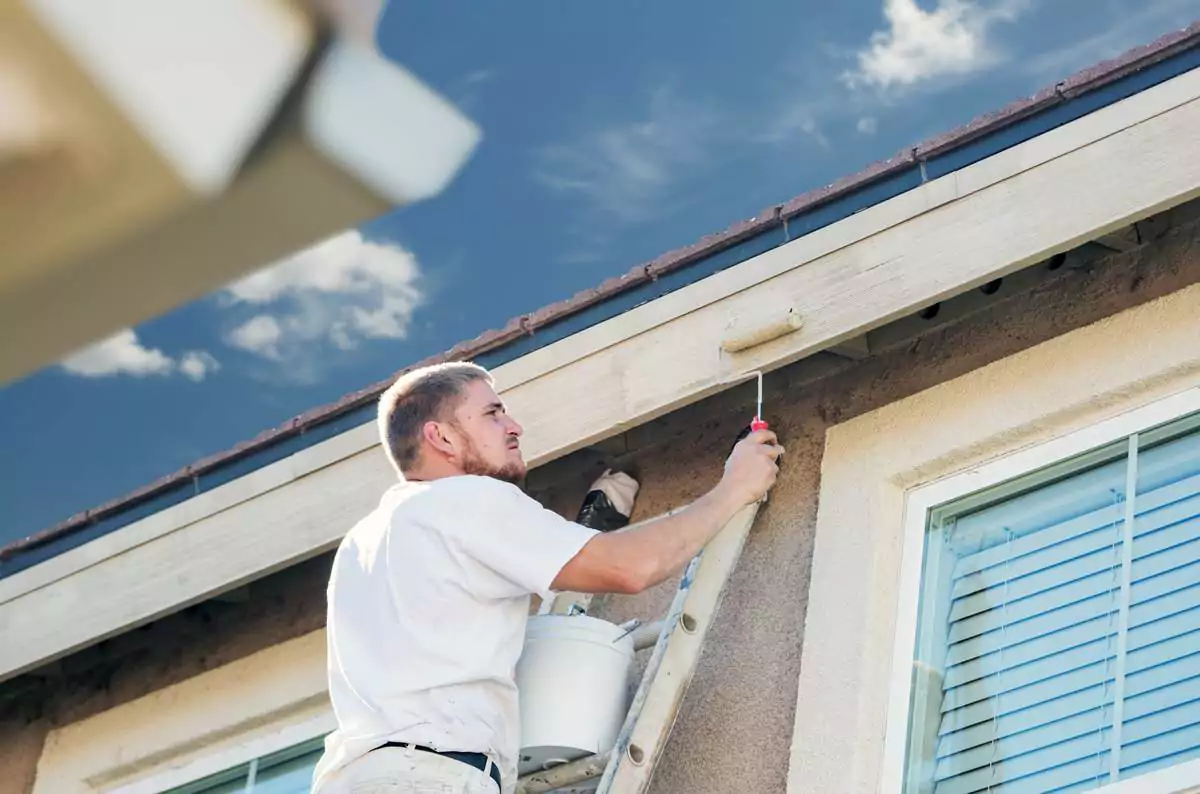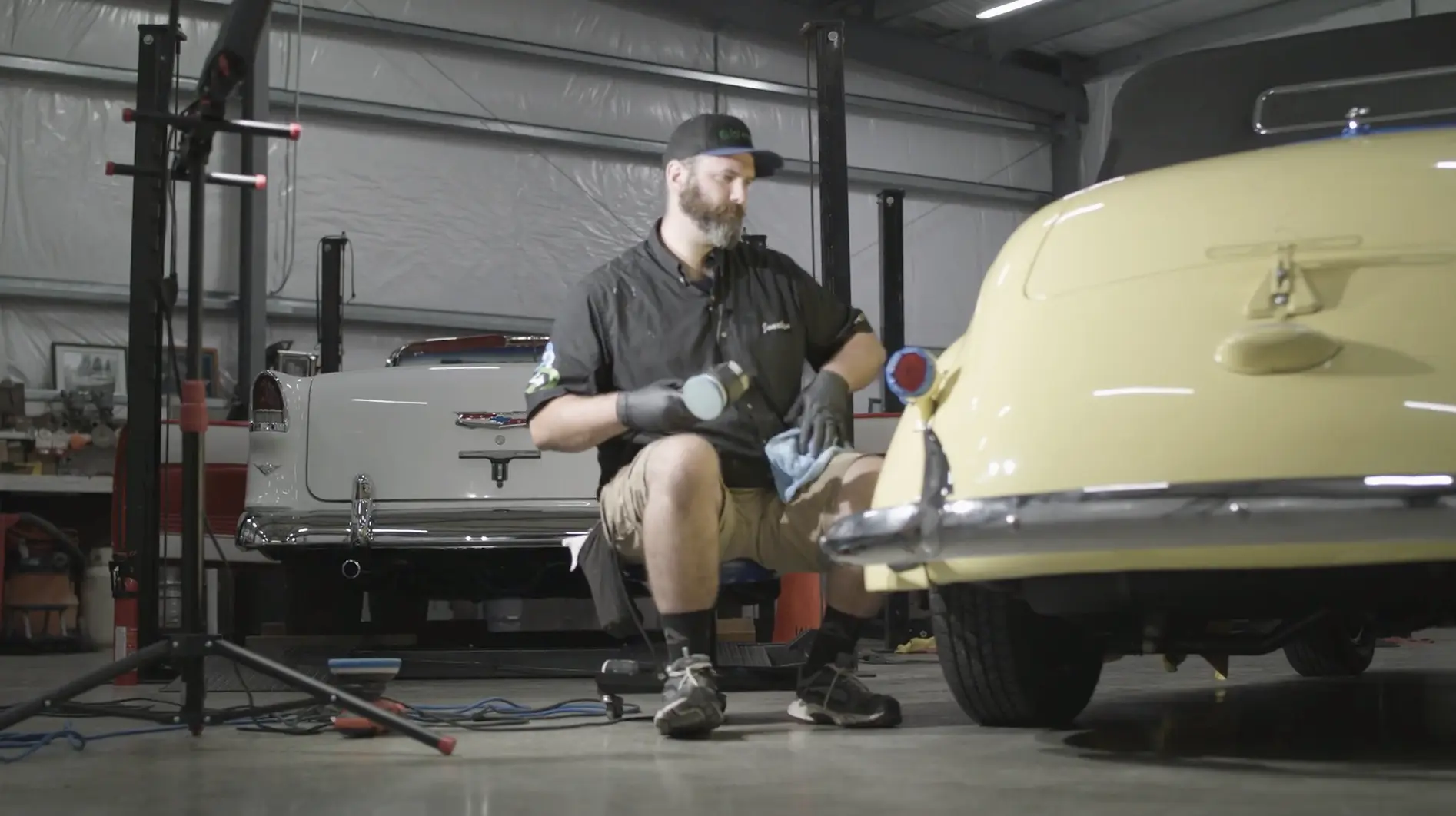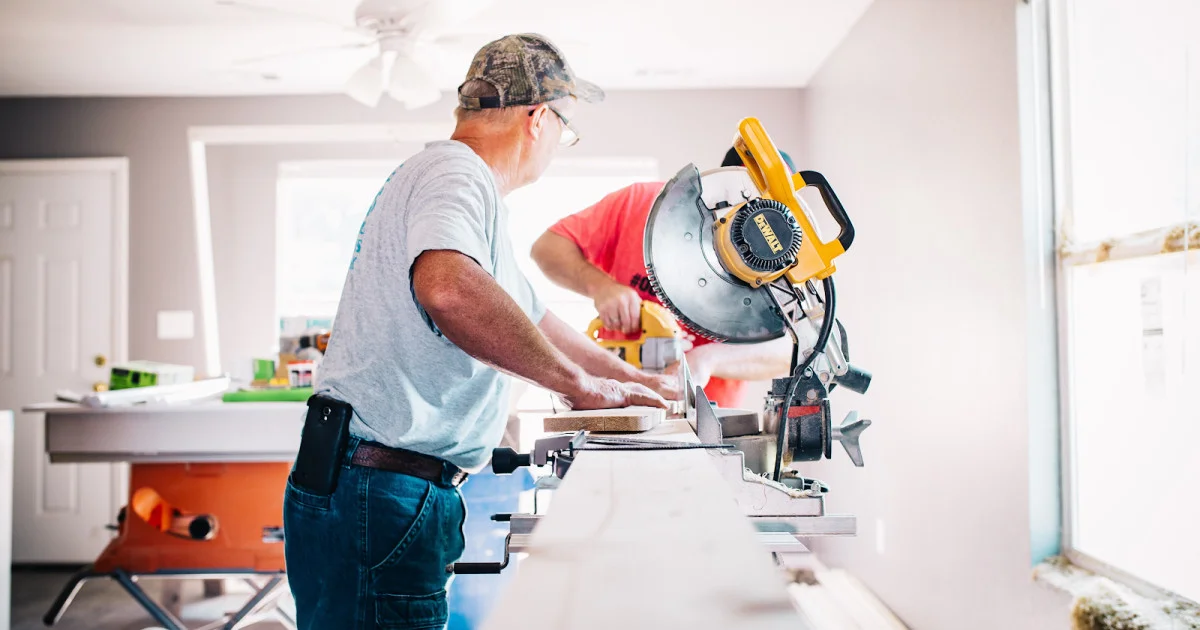
Pricing painting jobs correctly keeps your business running smoothly and growing over time. When you set the right price for a paint job, you cover your expenses, make money, and be upfront with your clients. Whether you’ve been in the business for years or just starting a painting business, knowing how to estimate painting jobs well can boost both your earnings and lead to satisfied customers.
In this article, we are going to outline how to accurately estimate a painting job in seven easy steps. You save time while your clients clearly understand how much they will spend.
1. Conduct a Thorough Site Inspection
Looking over the job site carefully is the first step in estimating a painting job. You’ll need to gather key details about the work so that your estimate matches the real effort needed.
Look at the Surfaces
Start by checking every surface that needs painting. Keep an eye out for the following issues:
- Peeling Paint: Any area with peeling or flaking paint may need extra prep, like scraping or sanding.
- Cracks and Holes: Find any cracks or holes that must be patched before painting.
- Moisture Problems: Watch for signs of water damage or mold, which might need special treatment.
Spot Potential Issues
Next, look for parts of the job that could make painting harder:
- High Ceilings: If the ceilings are high, you may need scaffolding or ladders, which can add time and cost.
- Hard-to-Reach Places: Check for spots that are tough to access, like behind large furniture or in tight corners, as these areas may need extra time and tools.
- Surfaces Needing Extra Work: See if any surfaces need special treatment, like priming or sealing, which will also affect your pricing estimate.
Measure Everything
Accurate measurements are key to determining how to estimate a house painting job. Make sure to measure the following:
- Walls: Measure the height and width of each wall to get the square footage.
- Ceilings: Measure the length and width of any ceiling surfaces.
- Trims and Other Details: Measure any trim, doors, windows, or other surfaces needing painting.
2. Calculate and Measure Paintable Surfaces
This step helps you determine the area that needs paint so you know how much paint and other supplies you’ll need.
Calculate the Total Square Footage
Start by measuring all the wall space. Here’s how to estimate a paint job by square feet:
- Measure Each Wall: Grab a tape measure and find the height and width of each wall. Multiply these numbers to get the square footage for each wall.
- Include Ceilings (if applicable): If you’re painting the ceiling, measure its length and width and add that to your total square footage.
How to Calculate Total Square Footage
- Wall 1: 10 ft (height) x 12 ft (width) = 120 sq ft
- Wall 2: 10 ft x 10 ft = 100 sq ft
- Ceiling: 12 ft x 10 ft = 120 sq ft
Total Square Footage: 120 + 100 + 120 = 340 sq ft
Subtract Unpaintable Areas
- Windows: Measure the height and width, then subtract from the total.
- Doors: Measure the area of doors and subtract.
- Other Areas: Exclude built-ins, fixtures, or areas covered by furniture.
Example:
- Window: 3 ft x 4 ft = 12 sq ft
- Door: 7 ft x 3 ft = 21 sq ft
- Total Unpaintable Area: 12 + 21 = 33 sq ft
Adjusted Total: 340 – 33 = 307 sq ft
Include Trim and Baseboards
Don’t forget to account for trim and baseboards.
- Measure Trim: Measure the total length around windows, doors, and baseboards.
- Calculate Area: Each linear foot of trim generally requires about 0.5 sq ft of paint.
Example:
- Trim Length: 20 ft (windows) + 30 ft (baseboards) = 50 ft
- Total Trim Area: 50 x 0.5 = 25 sq ft
Final Calculation:
Add the trim area to the adjusted total for the final paintable surface area:
Final Paintable Surface Area: 307 sq ft (Adjusted Total) + 25 sq ft (Trim Area) = 332 sq ft
3. Estimating Paint and Material Costs
Once you know the paintable surfaces, the next step is determining how much the paint and materials will cost. This helps you give a complete estimate that covers all necessary expenses.
Pick the Right Paint
Choosing the right type and quality of paint is important for both how the project turns out and how much you spend:
- Type of Paint: Decide if you need interior, exterior, or commercial-grade paint. Each type has special features suited for different situations.
- Quality of Paint: Higher-quality paints may have a higher price tag initially but often offer better coverage, durability, and finish. Think about washability, fade resistance, and VOC levels.
Estimate Paint Quantities
With your measurements ready, you can calculate how much paint you’ll need:
- Coverage Rates: Most paint cans tell you how much area a gallon can cover (usually around 350-400 square feet for one coat). Use this to find out how many gallons you will need.
- Calculate for Multiple Coats: If your project needs multiple coats (common for certain colors or finishes), multiply the total square footage by the required coats.
Example:
- Total Paintable Area: 332 sq ft
- Coverage per Gallon: 400 sq ft
- Gallons for One Coat: 332 ÷ 400 = 0.83 gallons (round to 1 gallon)
- If Two Coats Are Needed: 1 gallon × 2 = 2 gallons
Add Supplies and Equipment
Besides paint, think about other supplies and tools you’ll need for the job:
- Brushes/Rollers: $30
- Tape: $10
- Primer: $25
- Drop Cloths: $15
- Miscellaneous: $20 (trays, ladders, sandpaper, etc.)
Total Supplies Cost: $30 + $10 + $25 + $15 + $20 = $110
Final Cost Calculation
Combine your paint costs with your supply costs to create a complete estimate.
Paint Cost: 2 gallons × $30 = $60
Total Material Cost: Paint ($60) + Supplies ($110) = $170
4. Estimate Your Labor Costs
Having accurate labor cost estimates helps you account for the time and effort needed to complete the job.
Break Down the Job
Start by dividing the job into different phases so you can see how much time each one will take:
- Preparation: This covers tasks like moving furniture, taping edges, sanding surfaces, and applying primer. Try to estimate how long each of these tasks will take.
- Painting: Think about the time spent painting each coat, including the drying times between coats.
- Cleanup: Add time for cleaning brushes, rollers, and other tools, plus returning the space to its original condition.
Example Time Breakdown
- Preparation: 4 hours
- Painting (2 coats): 6 hours
- Cleanup: 2 hours
Total Estimated Time: 4 + 6 + 2 = 12 hours
Calculate Hourly Labor
Once you have a total for the labor hours, you can calculate your labor costs:
- Hourly Rate: Figure out your hourly rate based on your experience, skills, and market rates in your area.
- Helpers/Subcontractors: Include their rates in your calculations if you plan to bring in extra help or subcontractors.
Example Labor Cost Calculation
- Your Hourly Rate: $25/hour
- Total Labor Hours: 12 hours
- Labor Cost: 12 hours x $25/hour = $300
- Helper’s Rate: $15/hour
- Helper’s Hours: 6 hours
- Helper Cost: 6 hours x $15/hour = $90
Total Labor Costs: $300 (your labor) + $90 (helper) = $390
Account for Complexity
Some factors can make a painting job more complicated, which may require extra time:
- High Ceilings: If you’re painting high ceilings, you might need scaffolding or ladders, which can take more time during preparation and painting.
- Detailed Trim: Working with detailed trim can take longer because it needs precision and careful application.
- Difficult-to-Access Areas: Places that are hard to reach might take extra effort and time to ensure everything is covered properly.
Complexity Adjustment Example
- Additional Time for Complexity (20%):
12 hours x 0.20 = 2.4 hours - Adjusted Total Labor Hours:
12 hours + 2.4 hours = 14.4 hours - Revised Labor Cost:
14.4 hours x $25/hour = $360
Including these adjustments ensures your estimate shows the true scope of work needed for the project.
5. Factor in Overhead Costs
Overhead costs are the expenses that keep your business running smoothly. Including these costs helps you cover everything needed to stay profitable.
Determine Your Hourly Overhead Rate
To accurately add overhead to your estimates, start by figuring out your hourly overhead rate. This means looking at all your fixed and variable business expenses and dividing that total by the number of billable hours you plan to work in a year.
Here are some common overhead costs you should think about:
- Insurance: This covers liability and workers’ compensation.
- Rent: The cost of your office or storage space.
- Utilities: Bills for electricity, water, and internet.
- Equipment Maintenance: The cost of repairs and upkeep for your tools and vehicles.
- Marketing and Advertising: What you spend to promote your business.
- Calculate Total Overhead Costs: Add all these expenses together for a year.
- Estimate Billable Hours: Consider how many hours you expect to bill clients in a year (1,500 hours).
How To Calculate Your Hourly Overhead Rate
- Formula:
Hourly Overhead Rate = Total Overhead Costs ÷ Estimated Billable Hours - Example Calculation:
Total Overhead Costs: $30,000
Estimated Billable Hours: 1,500
Hourly Overhead Rate: $30,000 ÷ 1,500 = $20/hour
Apply to Project Hours
- Total Overhead Cost for the Project:
Estimated Project Hours: 14.4 hours
Hourly Overhead Rate: $20/hour
Total Overhead Cost: $20 x 14.4 = $288
Get In Touch: 858-842-5746
Let us earn your trust
On average, Pros increase monthly revenue generated through Housecall Pro by 50% after their first year.
See plan options and feature breakdown on our pricing page.
6. Add Your Desired Profit Margin to Your Estimate
Incorporating a profit margin into your estimate is key to growing your painting business. This step helps you recognize the value of your work and the risks that come with each project.
Choose a Profit Margin
Your profit margin can vary based on different factors. These factors include how complicated the job is, current market conditions, and your own business goals. Usually, profit margins for painting jobs fall between 10% and 30% of your total costs. Here’s what to think about when picking your margin:
- Job Complexity: More challenging jobs might need a higher profit margin because of the increased risk and effort.
- Market Rates: Check what your competitors charge to ensure your pricing is competitive and profitable.
- Your Business Goals: If you want to grow or buy new equipment, you might need a higher margin.
Apply Your Markup
Now it’s time to add everything together. After choosing a profit margin, add it to the total costs you calculated before, which includes materials, labor, and overhead. Here’s how to do that:
Calculate Total Costs
- Formula:
Total Costs = Materials Cost + Labor Cost + Overhead Cost - Example Calculation:
Materials Cost: $170
Labor Cost: $390
Overhead Cost: $288
Total Costs: $170 + $390 + $288 = $848
Determine Profit Amount
- Formula:
Profit Amount = Total Costs × (Desired Profit Margin ÷ 100) - Example Calculation:
Desired Profit Margin: 20%
Profit Amount = $848 × (20 ÷ 100) = $169.60
Calculate Final Estimate
- Formula:
Final Estimate = Total Costs + Profit Amount - Example Calculation:
Final Estimate = $848 + $169.60 = $1,017.60
7. Create a Professional Paint Job Estimate
Once you’ve gathered your calculations, it’s time to assemble a solid estimate for your client. A clear and organized estimate shows you mean business and helps build trust. Present your estimate on branded letterhead or a professional template. Include your business name, logo, contact information, and a unique estimate number. A well-organized document reflects professionalism.
After presenting your estimate, follow up with the client to see if they have any further questions or need additional information.
What Should My Estimate Include?
When you need to address how to estimate an exterior paint job, your estimate should include these details:
- Scope of Work: Clearly say which areas you will paint and list the tasks involved, like prep work, painting, and cleanup.
- Timeline: Give an estimated start and finish date for the project. Include important milestones so everyone knows what to expect.
- Materials List: Provide a detailed list of the paint and materials you’ll use, including brands and amounts. This way, clients know exactly what they’re getting.
- Cost Breakdown: Offer a clear breakdown of costs for labor, materials, overhead, and profit. Being open about these numbers helps build trust.
- Payment Terms: State your payment options, deposit requirements, and when payments are due. This ensures everyone is on the same page.
- Warranties and Guarantees: Mention any warranties you provide on your work or materials. This helps reassure clients about the quality of what they’re paying for.
- Exclusions: Clearly outline what is not included in the estimate. This avoids any confusion later on.
- Expiration Date: Let clients know how long the estimate will be valid. This encourages them to make a decision sooner rather than later.
- Contact Information: Include your business name, logo, and contact details. This makes it easy for clients to ask questions or confirm their projects.
Streamline Pricing Paint Jobs With Housecall Pro’s Estimating Software
Housecall Pro’s painting contractor software streamlines every step of your painting business, from generating accurate estimates to managing schedules and tracking job costs in real time. By automating invoicing, payment follow-ups, and team dispatching, you can focus on delivering high-quality results while cutting down on administrative tasks. Here’s what’s included with Housecall
- Paint Estimate App
Quickly create precise estimates for both interior and exterior painting jobs. - Multi-Option Templates: Painters can provide customers with different pricing tiers or options for paint jobs, encouraging them to consider higher-value services.
- Job Costing Tools: Painters can track labor and supply costs to keep a close eye on profit margins for each project.
- Customer Profile Management: Easily access customer history, preferences, and notes to inform estimates for repeat clients.
- Photo Attachments: Painters can attach photos to estimates, helping to document the scope of work or specific areas requiring attention.
- Digital Signatures: Customers can sign off on estimates on the spot, potentially leading to faster job conversions.
- Scheduling and Dispatching: After a client approves your estimate, you can easily manage your team’s schedules using a visual calendar. You can assign jobs to specific crew members, optimize routes for increased efficiency, and send real-time updates to clients.
- Conversion Tracking: Painters can monitor their estimate conversion rates, helping to refine their pricing and estimation strategies over time.
- Invoicing and Payment Follow-Ups
Create and send professional invoices immediately after each job. Housecall Pro also sends automated payment reminders and offers multiple payment methods.
With everything in one easy-to-use platform, you’ll save time, improve customer satisfaction, and increase profitability. Ready to transform your painting business? Start your free trial of Housecall Pro today and see the difference it makes!
Frequently Asked Questions
-
How do I figure out the square footage for a painting job?
-
To answer how to estimate a house painting job by square footage, start by measuring the total length of all walls you want to paint. Multiply that length by the height of the walls to get the total square footage.
For example, if the room is 10 feet high and the walls add up to 40 feet, the total area is 400 square feet. Next, subtract any areas that won’t be painted, like windows and doors. Finally, check the paint coverage rates, which usually range from 350 to 400 square feet per gallon, to find out how many gallons you need for the job. -
How do I calculate labor costs for painting?
-
When answering how to estimate commercial painting jobs, you also need to calculate the labor. Calculate the total hours it will take to finish the project and multiply that by your hourly rate. Break down the work into different tasks, such as prep work, painting, and cleanup, then estimate how long each task will take.
For instance, if you think it will take 10 hours of labor at a rate of $25 per hour, your labor cost will be $250. Don’t forget to include extra time for applying multiple coats or working in hard-to-reach spots.
-
How to estimate a paint job for a commercial project?
-
To estimate a commercial paint job, begin by accurately measuring the total surface area to be painted. Calculate paint quantity needed based on coverage rates, factoring in multiple coats if necessary.
Determine labor costs by estimating time for preparation, painting, and cleanup, using industry-standard productivity rates. Include costs for materials, supplies, and any special equipment required.
Finally, add overhead costs and your desired profit margin to reach the total estimate. Present this to the client in a clear, detailed format, itemizing costs for materials, labor, and additional services.
-
How to estimate interior paint jobs in terms of price per square foot?
-
When pricing a house painting job, rates usually range from $2 to $6 per square foot for interior work, depending on the paint quality and how complex the job is. For exterior painting, rates can be between $3 and $4.50 per square foot. Alternatively, how to estimate a paint job might change based on the room or specific tasks. Always ensure your final price covers your costs and target profit margin to stay profitable






